Sales: 888-488-3112
Support
Pain Relief
Anxiety Relief
Energy
Sleep
The Science
Why each ingredient was chosen for Relief Factor:
Omega-3 (EPA and DHA)
- EPA and DHA are essential omega-3 fatty acids from fish oil that are well known to promote healthy inflammatory balance. By acting as substrates for the body’s various anti-inflammatory mediators, EPA and DHA are essential to the promotion of a healthy inflammatory responses.
- C-reactive protein (CRP) is an inflammatory marker found in the blood, the levels of which rise in response to inflammation.
- Studies show that the higher the omega-3 levels in the blood of healthy individuals, the lower the CRP concentration.8
- Supplementation with EPA and DHA has been shown in some, although not all, studies to decrease CRP levels as well as other biomarkers of inflammation in the blood.9-12
- Published clinical trials and case studies also demonstrate the important role of EPA/DHA in supporting the health of the cardiovascular, immune, and nervous systems including mood.12-16
Curcumin
- Curcumin exerts its anti-inflammatory effects via a number of diverse mechanisms involving cell signaling molecules known as transcription factors (such as nuclear factor KappaB (NF-KappaB)), inflammatory cytokines (such as tumor necrosis factor (TNF) and interleukin 6 (IL-6)) and enzymes (such as cyclooxygenase 2 (COX-2)).19
- Curcumin is a potent suppressor of NF-KappaB and has been shown to decrease NF-KappaB in humans when taken as a supplement. 20
- Because of its effects on NF-KappaB, Curcumin is a powerful suppressor of COX-2, the key enzyme in the formation of potent mediators in the inflammatory response.22
- Due to its anti-inflammatory activity, curcumin demonstrates beneficial effects on muscle regeneration after trauma and the ability to offset muscle-damaging effects of downhill running.23-24
- Curcumin speeds recovery of running performance in mice by reducing inflammation-induced deficits in regeneration of muscle fibers, soreness, and fatigue.23
- Curcumin ameliorates pain sensitivity via mechanisms that are likely independent of its anti-inflammatory activity according to a number of animal studies.25-29 For example, in insulin-treated diabetic mice exhibiting increased sensitivity to pain either curcumin or resveratrol taken by mouth significantly reduced pain sensitivity.29
Resveratrol
- Resveratrol decreases blood indices of oxidative and inflammatory stress.45
- Like curcumin, resveratrol decreases inflammatory cytokines such as interleukin-6 (IL-6) and cyclooxygenase-2 (COX-2) by inhibiting NF-KappaB signaling.42
- Promising results from preclinicial and animal data are beginning to emerge.43-44
- A double blind placebo controlled trial published in 2011 randomized two groups (10 each) of normal-weight healthy subjects to placebo or a standardized Polygonum cuspidatum extract containing 40 mg resveratrol daily for six weeks. Blood indices of oxidative and inflammatory stress were measured and resveratrol was found to induce significant reductions in reactive oxygen species generation, NF-kappaB binding, and numerous pro-inflammatory markers including TNF-alpha, IL-6, and C-reactive protein compared with the baseline and the placebo.45
- Resveratrol, like curcumin, significantly decreases sensitivity to pain in animal studies.29-36
- In rodents, pro-inflammatory molecules known as cytokines are key players in the development of back and leg pain resulting from unhealthy discs and spinal nerves. In rodents, by decreasing pro-inflammatory cytokines, resveratrol significantly reduces pain behavior with disc-related pain.37
- Resveratrol alone suppressed inflammation and destruction of inflamed joint cells in vitro.38
Icariin
- Icariin has been shown to protect DNA, nerve cells, and stem cells against free radical-induced damage in vitro.47-48, 50
- Like resveratrol and curcumin, icariin appears to exert its potent anti-inflammatory effects via inhibition of NF-KappaB.49
- In recent studies, icariin significantly decreased lung inflammation in mice by inhibiting a number of inflammatory compounds in mice such as tumor necrosis factor alpha (TNF-alpha), interleukin-6 (IL-6), cycloxygenase-2 (COX-2), prostaglandin E2 (PGE(2)), nitric oxide (NO) as well as NF-kappaB activation.49,51
- In an in vitro study icariin partially reversed markers of inflammation and inflammation-induced joint degradation in cartilage cells from mice.46
References
- Goldberg RJ, Katz J. A meta-analysis of the analgesic effects of omega-3 polyunsaturated fatty acid supplementation for inflammatory joint pain. Pain. 2007 May;129(1-2):210-23.
- Maroon JC, Bost JW. Omega-3 fatty acids (fish oil) as an anti-inflammatory: an alternative to nonsteroidal anti-inflammatory drugs for discogenic pain. Surg Neurol. 2006 Apr;65(4):326-31.
- Fontani G, Suman AL, Migliorini S, Corradeschi, Ceccarelli I, Aloisi A, Carli G. Administration of Omega-3 Fatty Acids Reduces Positive Tender Point Count in Chronic Musculoskeletal Pain Patients. Journal of Complementary and Integrative Medicine. 2010 Jan;7(1):Article 35.
- Maggio M, Artoni A, Lauretani F, Borghi L, Nouvenne A, Valenti G, Ceda GP. The impact of omega-3 fatty acids on osteoporosis. Curr Pharm Des. 2009;15(36):4157-64
- Curtis CL, Hughes CE, Flannery CR, Little CB, Harwood JL, Caterson B. n-3 fatty acids specifically modulate catabolic factors involved in articular cartilage degradation. J Biol Chem. 2000 Jan 14;275(2):721-4.
- Zainal Z, Longman AJ, Hurst S, Duggan K, Caterson B, Hughes CE, Harwood JL. Relative efficacies of omega-3 polyunsaturated fatty acids in reducing expression of key proteins in a model system for studying osteoarthritis. Osteoarthritis Cartilage. 2009 Jul;17(7):896-905.
- Wann AK, Mistry J, Blain EJ, Michael-Titus AT, Knight MM. Eicosapentaenoic acid and docosahexaenoic acid reduce interleukin-1ß-mediated cartilage degradation. Arthritis Res Ther. 2010;12(6):R207.
- Micallef MA, Munro IA, Garg ML. An inverse relationship between plasma n-3 fatty acids and C-reactive protein in healthy individuals. Eur J Clin Nutr. 2009 Sep;63(9):1154-6.
- Bloomer RJ, Larson DE, Fisher-Wellman KH, Galpin AJ, Schilling BK. Effect of eicosapentaenoic and docosahexaenoic acid on resting and exercise-induced inflammatory and oxidative stress biomarkers: a randomized, placebo controlled, cross-over study. Lipids Health Dis. 2009 Aug 19;8:36.
- Skulas-Ray AC, Kris-Etherton PM, Harris WS, Vanden Heuvel JP, Wagner PR, West SG. Dose-response effects of omega-3 fatty acids on triglycerides, inflammation, and endothelial function in healthy persons with moderate hypertriglyceridemia. Am J Clin Nutr. 2011 Feb;93(2):243-52.
- Myhrstad MC, Retterstøl K, Telle-Hansen VH, Ottestad I, Halvorsen B, Holven KB, Ulven SM. Effect of marine n-3 fatty acids on circulating inflammatory markers in healthy subjects and subjects with cardiovascular risk factors. Inflamm Res. 2011 Apr;60(4):309-19.
- Ebrahimi M, Ghayour-Mobarhan M, Rezaiean S, Hoseini M, Parizade SM, Farhoudi F, Hosseininezhad SJ, Tavallaei S, Vejdani A, Azimi-Nezhad M, Shakeri MT, Rad MA, Mobarra N, Kazemi-Bajestani SM, Ferns GA. Omega-3 fatty acid supplements improve the cardiovascular risk profile of subjects with metabolic syndrome, including markers of inflammation and auto-immunity. Acta Cardiol. 2009 Jun;64(3):321-7.
- Ko GD, Nowacki NB, Arseneau L, Eitel M, Hum A. Omega-3 fatty acids for neuropathic pain: case series. Clin J Pain. 2010 Feb;26(2):168-72. PubMed PMID: 20090445.
- Monahan KD, Wilson TE, Ray CA. Omega-3 fatty acid supplementation augments sympathetic nerve activity responses to physiological stressors in humans. Hypertension. 2004 Nov;44(5):732-8.
- Lin PY, Su KP. A meta-analytic review of double-blind, placebo-controlled trials of antidepressant efficacy of omega-3 fatty acids. J Clin Psychiatry. 2007 Jul;68(7):1056-61.
- James M, Proudman S, Cleland L. Fish oil and rheumatoid arthritis: past, present and future. Proc Nutr Soc. 2010 Aug;69(3):316-23.
- Aggarwal BB, Harikumar KB. Potential therapeutic effects of curcumin, the anti-inflammatory agent, against neurodegenerative, cardiovascular, pulmonary, metabolic, autoimmune and neoplastic diseases. Int J Biochem Cell Biol. 2009 Jan;41(1):40-59.
- Deodhar SD, Sethi R, Srimal RC. Preliminary study on antirheumatic activity of curcumin. Indian J Med Res 1980;71:632-34.
- Zhou H, Beevers CS, Huang S. The targets of curcumin. Curr Drug Targets. 2011 Mar 1;12(3):332-47. Review.
- Singh S, Aggarwal BB. Activation of transcription factor NF-kappa B is suppressed by curcumin (diferuloylmethane) [corrected]. J Biol Chem. 1995 Oct 20;270(42):24995-5000.
- Shakibaei M, Mobasheri A, Buhrmann C. Curcumin synergizes with resveratrol to stimulate the MAPK signaling pathway in human articular chondrocytes in vitro. Genes Nutr. 2011 May;6(2):171-9.
- Kang G, Kong PJ, Yuh YJ, Lim SY, Yim SV, Chun W, Kim SS. Curcumin suppresses lipopolysaccharide-induced cyclooxygenase-2 expression by inhibiting activator protein 1 and nuclear factor kappaB bindings in BV2 microglial cells. J Pharm Sci 94: 325–328, 2004.
- Davis JM, Murphy EA, Carmichael MD, Zielinski MR, Groschwitz CM, Brown AS, Gangemi JD, Ghaffar A, Mayer EP. Curcumin effects on inflammation and performance recovery following eccentric exercise-induced muscle damage. Am J Physiol Regul Integr Comp Physiol. 2007 Jun;292(6):R2168-73.
- Thaloor D, Miller KJ, Gephart J, Mitchell PO, Pavlath GK. Systemic administration of the NF-kappaB inhibitor curcumin stimulates muscle regeneration after traumatic injury. Am J Physiol. 1999 Aug;277(2 Pt 1):C320-9.
- Yeon KY, Kim SA, Kim YH, Lee MK, Ahn DK, Kim HJ, Kim JS, Jung SJ, Oh SB. Curcumin produces an antihyperalgesic effect via antagonism of TRPV1. J Dent Res. 2010 Feb;89(2):170-4.
- Mittal N, Joshi R, Hota D, Chakrabarti A. Evaluation of antihyperalgesic effect of curcumin on formalin-induced orofacial pain in rat. Phytother Res. 2009 Apr;23(4):507-12.
- Sharma S, Kulkarni SK, Agrewala JN, Chopra K. Curcumin attenuates thermal hyperalgesia in a diabetic mouse model of neuropathic pain. Eur J Pharmacol. 2006 May 1;536(3):256-61.
- Tajik H, Tamaddonfard E, Hamzeh-Gooshchi N. The effect of curcumin (active substance of turmeric) on the acetic acid-induced visceral nociception in rats. Pak J Biol Sci. 2008 Jan 15;11(2):312-4.
- Sharma S, Chopra K, Kulkarni SK. Effect of insulin and its combination with resveratrol or curcumin in attenuation of diabetic neuropathic pain participation of nitric oxide and TNF-alpha. Phytother Res. 2007 Mar;21(3):278-83.
- Pham-Marcou TA, Beloeil H, Sun X, Gentili M, Yaici D, Benoit G, Benhamou D, Mazoit JX. Antinociceptive effect of resveratrol in carrageenan-evoked hyperalgesia in rats: prolonged effect related to COX-2 expression impairment. Pain. 2008 Nov 30;140(2):274-83. Epub 2008 Sep 23.
- Sharma S, Kulkarni SK, Chopra K. Effect of resveratrol, a polyphenolic phytoalexin, on thermal hyperalgesia in a mouse model of diabetic neuropathic pain. Fundam Clin Pharmacol. 2007 Feb;21(1):89-94.
- Sharma S, Chopra K, Kulkarni SK. Effect of insulin and its combination with resveratrol or curcumin in attenuation of diabetic neuropathic pain: participation of nitric oxide and TNF-alpha. Phytother Res. 2007 Mar;21(3):278-83.
- Granados-Soto V, Argüelles CF, Ortiz MI. The peripheral antinociceptive effect of resveratrol is associated with activation of potassium channels. Neuropharmacology. 2002 Oct;43(5):917-23.
- Torres-López JE, Ortiz MI, Castañeda-Hernández G, Alonso-López R, Asomoza-Espinosa R, Granados-Soto V. Comparison of the antinociceptive effect of celecoxib, diclofenac and resveratrol in the formalin test. Life Sci. 2002 Feb 22;70(14):1669-76.
- Falchi M, Bertelli A, Galazzo R, Viganò P, Dib B. Central antalgic activity of resveratrol. Arch Ital Biol. 2010 Dec;148(4):389-96.
- Utreras E, Terse A, Keller J, Iadarola MJ, Kulkarni AB. Resveratrol inhibits Cdk5 activity through regulation of p35 expression. Mol Pain. 2011 Jul 7;7:49.
- Wuertz K, Quero L, Sekiguchi M, Klawitter M, Nerlich A, Konno S, Kikuchi S, Boos N. The red wine polyphenol resveratrol shows promising potential for the treatment of nucleus pulposus mediated pain in vitro and in vivo. Spine (Phila Pa 1976). 2011 May 14.
- Shakibaei M, Csaki C, Nebrich S, Mobasheri A. Resveratrol suppresses interleukin-1beta-induced inflammatory signaling and apoptosis in human articular chondrocytes: potential for use as a novel nutraceutical for the treatment of osteoarthritis. Biochem Pharmacol. 2008 Dec 1;76(11):1426-39.
- Baur JA, Sinclair DA. Therapeutic potential of resveratrol: the in vivo evidence. Nat Rev Drug Discov. 2006 Jun;5(6):493-506. Epub 2006 May 26.
- Sharma RA, Steward WP, Gescher AJ. Pharmacokinetics and pharmacodynamics of curcumin. Adv Exp Med Biol. 2007;595:453-70.
- Hsu CH, Cheng AL. Clinical studies with curcumin. Adv Exp Med Biol. 2007;595:471-80.
- Gonzales AM, Orlando RA. Curcumin and resveratrol inhibit nuclear factor-kappaB-mediated cytokine expression in adipocytes. Nutr Metab (Lond). 2008 Jun 12;5:17.
- Vang O, Ahmad N, Baile CA, Baur JA, Brown K, Csiszar A, Das DK, Delmas D, Gottfried C, Lin HY, Ma QY, Mukhopadhyay P, Nalini N, Pezzuto JM, Richard T, Shukla Y, Surh YJ, Szekeres T, Szkudelski T, Walle T, Wu JM. What is new for an old molecule? Systematic review and recommendations on the use of resveratrol. PLoS One. 2011;6(6):e19881.
- Patel KR, Scott E, Brown VA, Gescher AJ, Steward WP, Brown K. Clinical trials of resveratrol. Ann N Y Acad Sci. 2011 Jan;1215:161-9.
- Ghanim H, Sia CL, Abuaysheh S, Korzeniewski K, Patnaik P, Marumganti A, Chaudhuri A, Dandona P. An antiinflammatory and reactive oxygen species suppressive effects of an extract of Polygonum cuspidatum containing resveratrol. J Clin Endocrinol Metab. 2010 Sep;95(9):E1-8.
- Liu MH, Sun JS, Tsai SW, Sheu SY, Chen MH. Icariin protects murine chondrocytes from lipopolysaccharide-induced inflammatory responses and extracellular matrix degradation. Nutr Res. 2010 Jan;30(1):57-65.
- Zhao F, Tang YZ, Liu ZQ. Protective effect of icariin on DNA against radical-induced oxidative damage. J Pharm Pharmacol. 2007 Dec;59(12):1729-32.
- Wo YB, Zhu DY, Hu Y, Wang ZQ, Liu J, Lou YJ. Reactive oxygen species involved in prenylflavonoids, icariin and icaritin, initiating cardiac differentiation of mouse embryonic stem cells. J Cell Biochem. 2008 Apr 1;103(5):1536-50.
- Xu CQ, Liu BJ, Wu JF, Xu YC, Duan XH, Cao YX, Dong JC. Icariin attenuates LPS-induced acute inflammatory responses: involvement of PI3K/Akt and NF-kappaB signaling pathway. Eur J Pharmacol. 2010 Sep 10;642(1-3):146-53.
- Zhang L, Huang S, Chen Y, Wang Z, Li E, Xu Y. Icariin Inhibits Hydrogen Peroxide-Mediated Cytotoxicity by Up-regulating Sirtuin Type 1-Dependent Catalase and Peroxiredoxin. Basic Clin Pharmacol Toxicol. 2010 Aug 19.
- Wu JF, Dong JC, Xu CQ. [Effects of icariin on inflammation model stimulated by lipopolysaccharide in vitro and in vivo]. Zhongguo Zhong Xi Yi Jie He Za Zhi. 2009 Apr;29(4):330-4.



